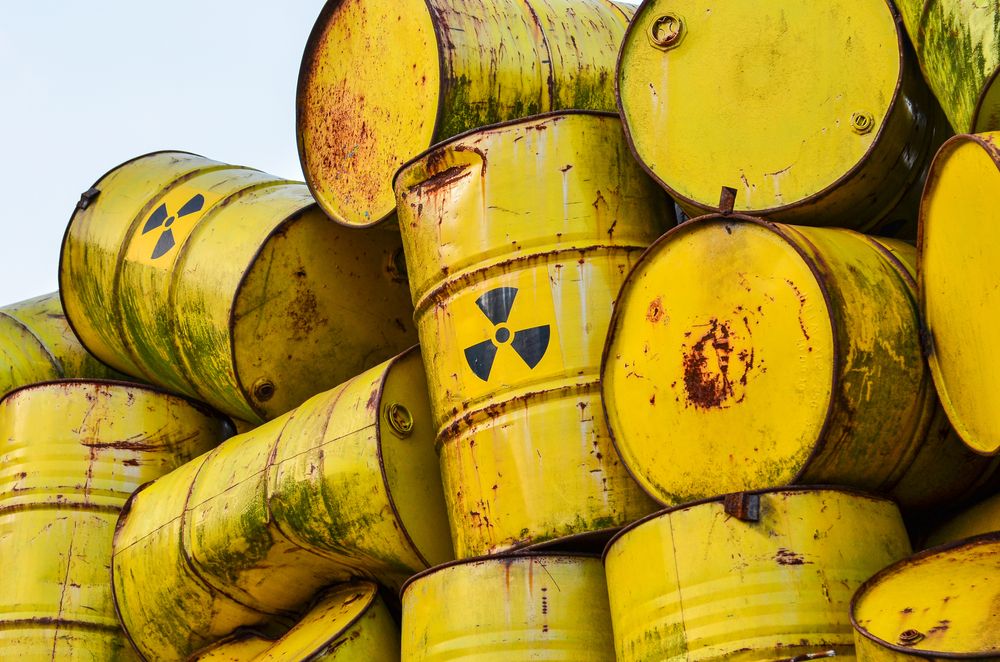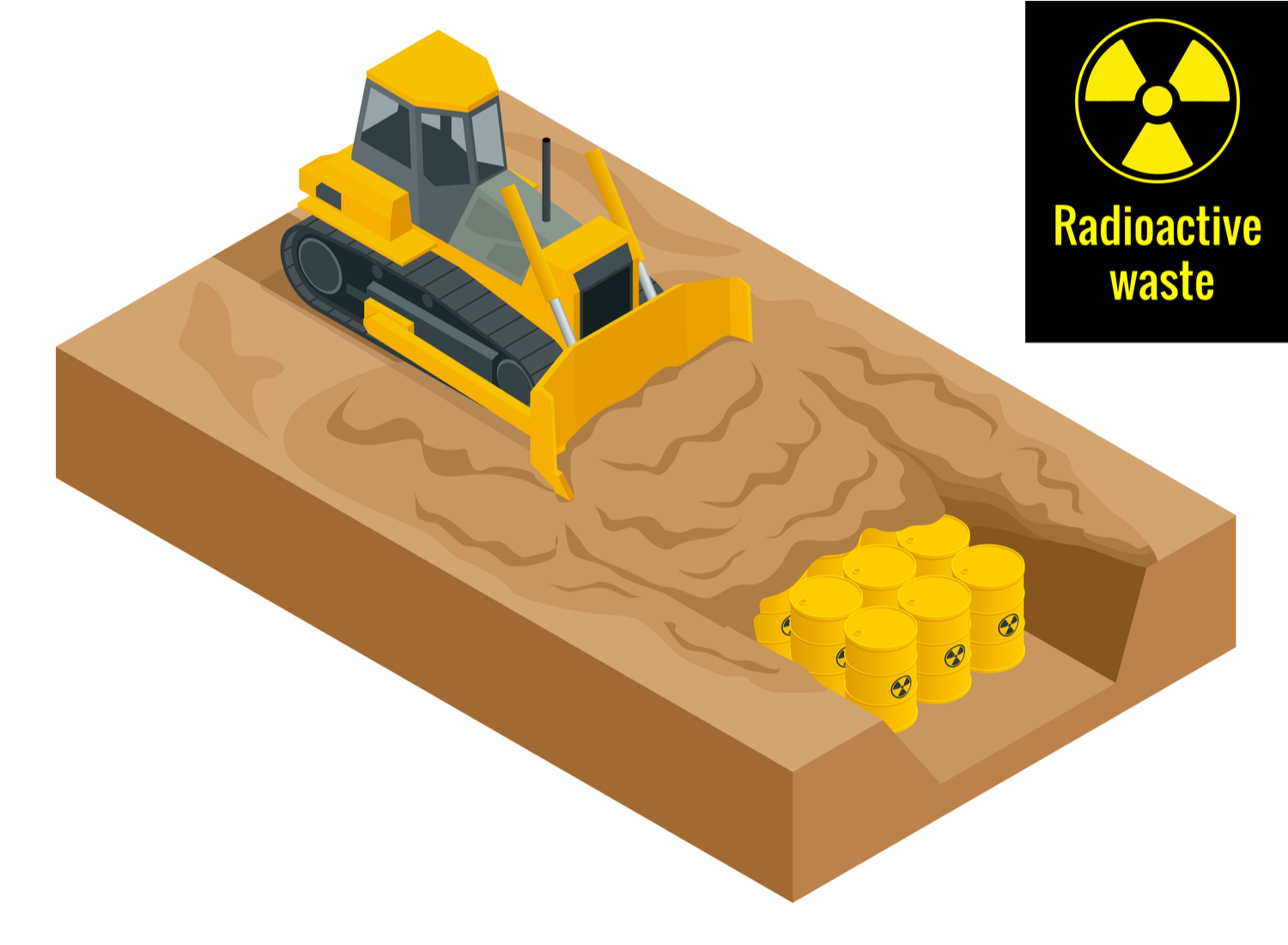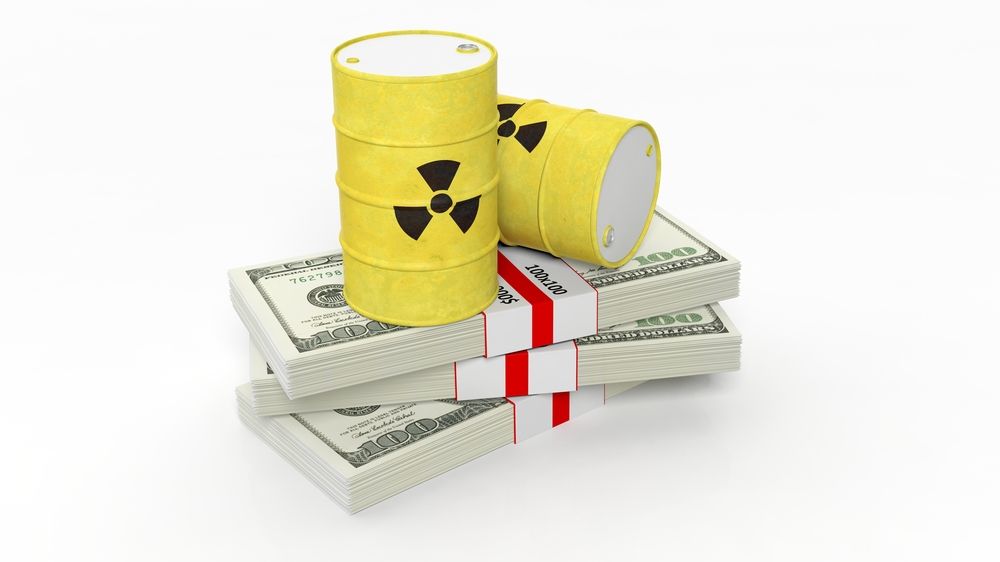Radioactive Waste Management: the Tale of a U.S. Nightmare
Between alarming scientific reports, half-baked political decisions, and dismissive public attitudes, the problem of radioactive waste in the U.S. remains unaddressed.

Between alarming scientific reports, half-baked political decisions, and dismissive public attitudes, the problem of radioactive waste in the U.S. remains unaddressed.
Electricity generation in the U.S. comes mainly from three energy sources: Fossil fuels (62.7%), Nuclear (19.7%), and Renewables (17.5%). Among these, fossil fuels are considered as the most polluting, and renewable energy sources as the cleanest. But what about the cleanliness of nuclear energy?
Nuclear-generated electricity is indeed considered as a clean energy source with low carbon dioxide (CO2) emissions. And, as we all know, in all greenhouse gases, CO2 has the most impact on our planet, since it represents about 75% of them. On this point, the nuclear-generated electricity cannot be blamed, as opposed to coal, natural gas, petroleum, and other fossil fuels. So the lead question is: Why is there so much controversy surrounding nuclear power generation?
Nuclear power plants do not emit greenhouse gases, but they leave behind something that could be more serious. Nuclear-generated electricity results from a fission reaction, which occurs when a uranium atom splits and releases energy in the form of heat. This energy produces the steam, which is responsible for the turbines spins and consequently electricity generation.
The fission reaction involves the use of uranium fuel, which will be considered as waste once spent.
Indeed, the nuclear power generation follows the so-called nuclear fuel cycle, which involves several phases. These phases aim to extract uranium, produce and process reactor fuel, and then to store the used fuel, better known as spent fuel, for either later reprocessing or final disposal. All these phases require special attention, because each deals with harmful radioactive metals and generates waste, and not just any kind of waste. In this case, it is hazardous waste containing radioactive materials, which are very harmful to the environment and to our health (ionizing radiation exposure).
An example of how this waste could be harmful to the environment and to our health is the radioactive incident relative to the nuclear waste leak that occurred in 2014, at the Waste Isolation Pilot Plant (WIPP), 26 miles east of Carlsbad, New Mexico. This incident caused an explosion and the radiological contamination of 21 employees. Investigations on this incident took time since the access to the underground was forbidden for a couple of months, due to its radioactivity. The direct cause behind this incident has been identified later as an exothermic reaction of incompatible materials. The reaction occurred in a single cask that turned out to be packed with the wrong type of litter.
Most importantly, nuclear waste represents a long-term risk, since it contains radioactive materials that require thousands of years to decay. According to the U.S.NRC:
“Radioactive isotopes eventually decay, or disintegrate, to harmless materials. Some isotopes decay in hours or even minutes, but others decay very slowly. Strontium-90 and cesium-137 have half-lives of about 30 years (half the radioactivity will decay in 30 years). Plutonium-239 has a half-life of 24,000 years.”
This means that the nuclear waste produced up to now, will affect life on our planet for thousands of years to come. Especially when taking into consideration that the first commercial nuclear power plant in the U.S. started operating in 1958, and that currently, 60 plants are operating with 97 reactors. It is therefore not surprising that there are more than 90,000 metric tons of highly radioactive nuclear waste within the U.S.. What is striking is that there is simply no ideal location where to store them. What, then, is to be done with all of this hazardous waste?
Radioactive waste can take different forms: gaseous, liquid, and solid. In addition, it is categorized according to the amount of radiation emitted in three main groups: Low-level waste (LLW) and Intermediate-level waste (ILW), and High-level waste (HLW). The LLW and ILW is generated during the production of electricity, and emits very low levels of radiation that are considered harmless to the human body. However, the HLW contains the most toxic radionuclides found in the spent nuclear fuel and the chemical substances produced during its reprocessing.
The LLW and ILW are either stored in near-surface facilities for short-lived materials, or in deep geological sites for long-lived materials. The HLW, which is high-risk, requires a complex treatment carried out over a long period of time, and ends up in deep geological repositories. Broadly speaking, this treatment involves a first step of pressing the uranium materials into small pellets, which in turn will be placed in tubes, called rods. These rods will then be cooled in deep pools of water for several years. Then, a second step in which the waste is further packaged in special containers, called dry casks. These casks contain canisters made of many insulation layers, generally counting stainless metals, crystalline ceramics, and glass, in order to protect the environment from any eventual radioactivity leakage.

Scientific attitude
So far, this technique of radioactive waste storage has been considered efficient enough, until a recent scientific study proved its vulnerability. Indeed, according to the investigations, conducted by X. Guo and his colleagues, on the HLW management in the U.S., the canister inside the dry cask can corrode severely. This is mainly due to the possible chemical interactions between the different materials composing the canister.
Moreover, this degradation begins at the cooling process of the nuclear fuel rods, where a confined crevice space appears in the stainless steel–glass interface component of the canister, due to an increase in local acidity. The glass deterioration can in turn lead to an increase in the local alkalinity outside the crevice. These latter reactions, which are referred to as anodic and cathodic, occur simultaneously and cause the dissolution of metals, hence the vulnerability of the canister and the danger of radionuclides release.
Besides, we must not forget that the investigations undertaken by X. Guo and his colleagues did not consider the impact of natural hazards (storms, floods, earthquakes...) or eventual acts of terrorism on the dry casks, which can affect the risk of radioactivity leaks. One thing is for sure though: this in-depth study demonstrates how the current U.S. nuclear waste management plans are far from perfect. Moreover, even if future designs of dry casks could be improved, we would still have to find a way to deal with existing ones that already started corroding, such as the old casks that were stored in Hanford, WA and Savannah River, SC sites. Therefore, under current circumstances, nuclear waste disposal sites will never be safe.
Political and public attitudes
These facts raise the question of how the political body and citizens view the seriousness of this matter and what concrete actions have been conducted in that respect.
Despite everything, to date, there is no permanent geologic repository for disposal of HLW in the U.S. Where, then, could the dry casks be disposed of? HLW produced from commercial nuclear power plants are simply being accumulated at the power plant sites in 39 states. This waste is awaiting a final disposal that might ultimately never occur, due to the issues faced by radioactive waste management plans.
In order to address this problem, a plan to build a permanent disposal facility for HLW at Yucca Mountain, in Nevada, was proposed years ago, in 1987. However, this project has been stuck in limbo for several years due to political and public opposition. Indeed, today, people's awareness of radioactive waste has increased, and consequently many anti-nuclear NGOs have been engaged on nuclear waste concerns. There are scientific reports about the unsuitability of this site regarding its hydrology, seismic and volcanic properties, not to mention that the site is very close to the largest metropolitan area in the state: Las Vegas.
The US Department of Energy (DOE) estimated the cost of constructing a repository at Yucca Mountain to about $97 billion in 2008. Since then, the Congress has kept putting this project on standby under the pretext of its high cost against the lack of funding.

So, what could be done to break this deadlock as soon as possible?
- A final decision on Yucca Mountain must be taken. It does not matter if the project is accepted and therefore funded, or if it is abandoned and in this case, a new geological disposal site must be designated.
- Sites designation process should take into account the opinion of the potential host communities. Indeed, in order to gain social acceptance, such projects should promote the public engagement and participation through transparency and good governance.
- Extensive scientific research is required and must be encouraged in order to find a smart solution to recycle the nuclear waste.
Conclusions
Nuclear energy is one of the most puzzling scientific discoveries that the world has ever known. It is both considered as a clean and hazardous source of energy. It can help reduce carbon dioxide (CO2) emissions, and thereby mitigate the climate change consequences.
However, we cannot afford to forget the fatalities and damages caused by past nuclear accidents, some of which still have a radiological impact on our planet today.
One thing is certain: in order to continue using this source of energy, efficient nuclear waste management solutions are needed today.
Augurisk is a risk assessment platform for Climate change, Natural Hazards and Societal Risks. We help people and businesses assess climate risks associated with their properties, so they can better prepare for the future.

